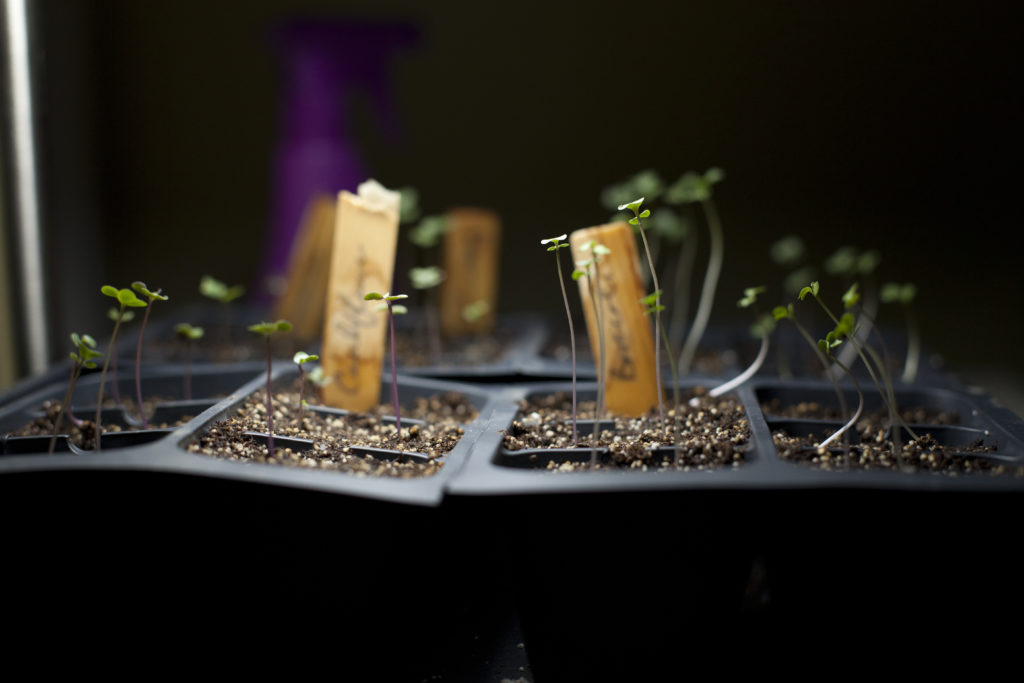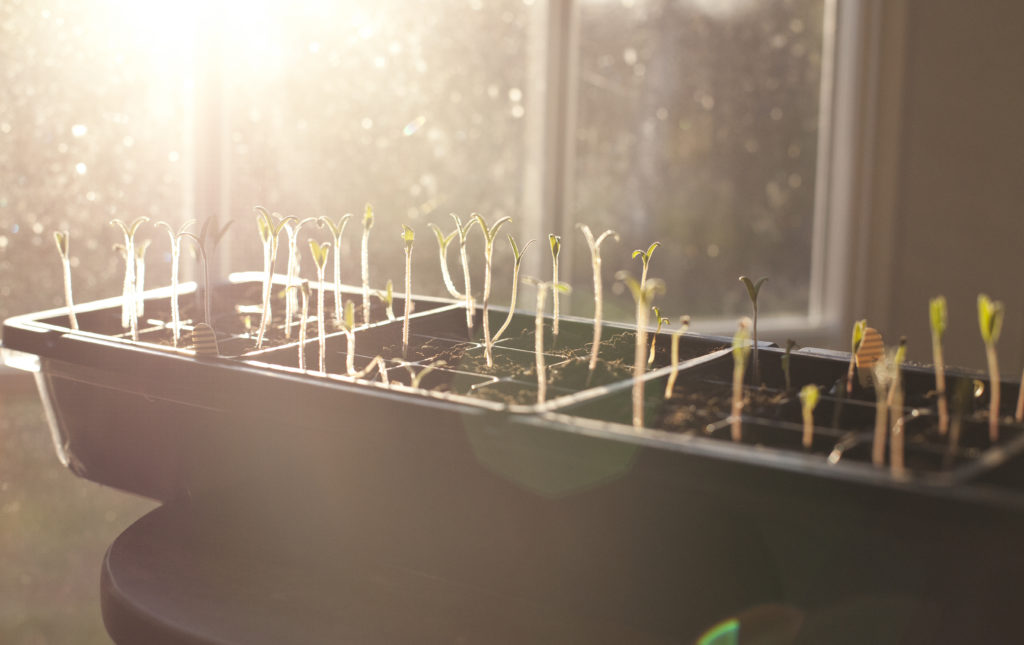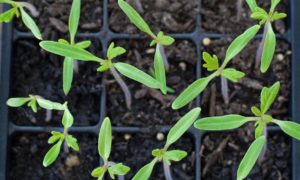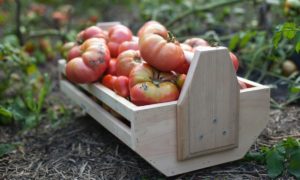Assuming you planted your seeds properly and have kept them nice and warm, you should have beautiful seedlings emerging right about now! Once your seedlings have “popped” out of the soil you will want to remove the plastic cover as it has served its purpose. If you leave it on too long, the seedlings will begin to turn white at the soil line and essentially rot.
If they have not broken through after ten days or so, then a condition wasn’t properly met whether it be over/under watering, not warm enough soil, or the seeds were planted too deep. Luckily, you still have time to replant at this point (assuming you still have seeds) to get your plants in the ground in time! If everything went well though and your seedlings are thriving, now it’s time to pay attention to the three main factors that affect growth:
Light
This is the point where sunlight is the most important environmental factor to set your tomatoes up for success. Some people choose to use artificial growth lights to guarantee that their seedlings will get the maximum amount of light possible. This is really the only solution if you lack ample natural sunlight. If this is something you’re choosing to do, then you should provide 12-15 hours per day being careful that you’re keeping an eye on how close the lights are to your plants. You don’t want to put the light source too close and burn the plants you’ve nurtured, but you don’t want them too far away where the plants will “reach” for the light and become leggy.
However, if you’re like me and are too cheap to buy artificial growth lights, but have a south facing window, then you solely rely on natural sunlight. Although this may not be the most ideal of situations (unless you live in Southern California where it is full sun 360 days a year) it will certainly do the trick! You just want to be sure that the plants are in direct sunlight. Depending on the size of the window, number of windows, and the general setup of your room, you may want to rotate the planter halfway through daylight hours to ensure even sun exposure.
Your seedlings need ample sunlight in order to grow strong, thick stems that will set them up to thrive once transplanted outside. If they are not getting sufficient light, you will find your plants are growing very tall and thin with very little leaves aka “leggy”. If you see this happening, you will want to consider getting some grow lights as they aren’t getting enough light naturally, or gently blow a fan on the seedlings a few hours a day. This will essentially mimic a breeze, triggering the plants to strengthen up their stems. But the root of the cause is probably lack of sunlight and there is no substitution for a lack in light.
What are “leggy” seedlings?
Legginess refers to seedlings that grow too tall too fast, with weak stems, and few leaves. They can often be seen leaning to one side or another, often to the side of their light source. This is referred to as “reaching“ for light. Leggy seedlings typically do not hold up well to transplant outdoors as they have weaker stems that cannot hold up well against the elements such as wind or rain.

Soil Temperature
Soil temperature is another key factor in growing strong, healthy seedlings. If the soil is very warm like required for germination, plants will wilt and die because they do not have enough leaves to produce energy to hold up to the stress of the heat. If the soil is too cool, the seedling’s growth will be stunted and struggle to grow.
The soil temperature also has an affect on the legginess of the plants. If the soil is too warm it will cause the seedlings to grow too high, too fast, without developing leaves. Ideal temperature range is between 60°F-70°F. As long as your ambient temperature is within this range consistently, the soil temperature will be okay.
Water
Just like when planting the seeds, careful attention needs to be paid to the watering of the seedlings. Under watering is just as detrimental as overwatering and the soil should be consistently damp and wetted (as I like to refer to it), without being soaked and water logged. You should check the seedlings daily, and it may be easier to gently give them a mist of water with a spray bottle each day rather than risk soaking them with a watering can. Even watering is key here. You do not want to shock the plants with too dry, then too wet soil. Keep it consistently damp to keep your seedlings strong and healthy!

This may all seem daunting, like a lot of work, or like it may not be worth it because the plants seem too finicky. They really are quite hardy plants and as long as they have plenty of sunlight, a warm soil temperature, and are consistently watered, you will have strong seedlings that will be ready for transplant in a little over a month!
Soon it will be time to thin out the weaker plants, transplant to larger containers, and then get ready for the final plant! Stay tuned!


Can you tell me a little more about how you take the seeds from the tomato and how you store them for the next spring planting?